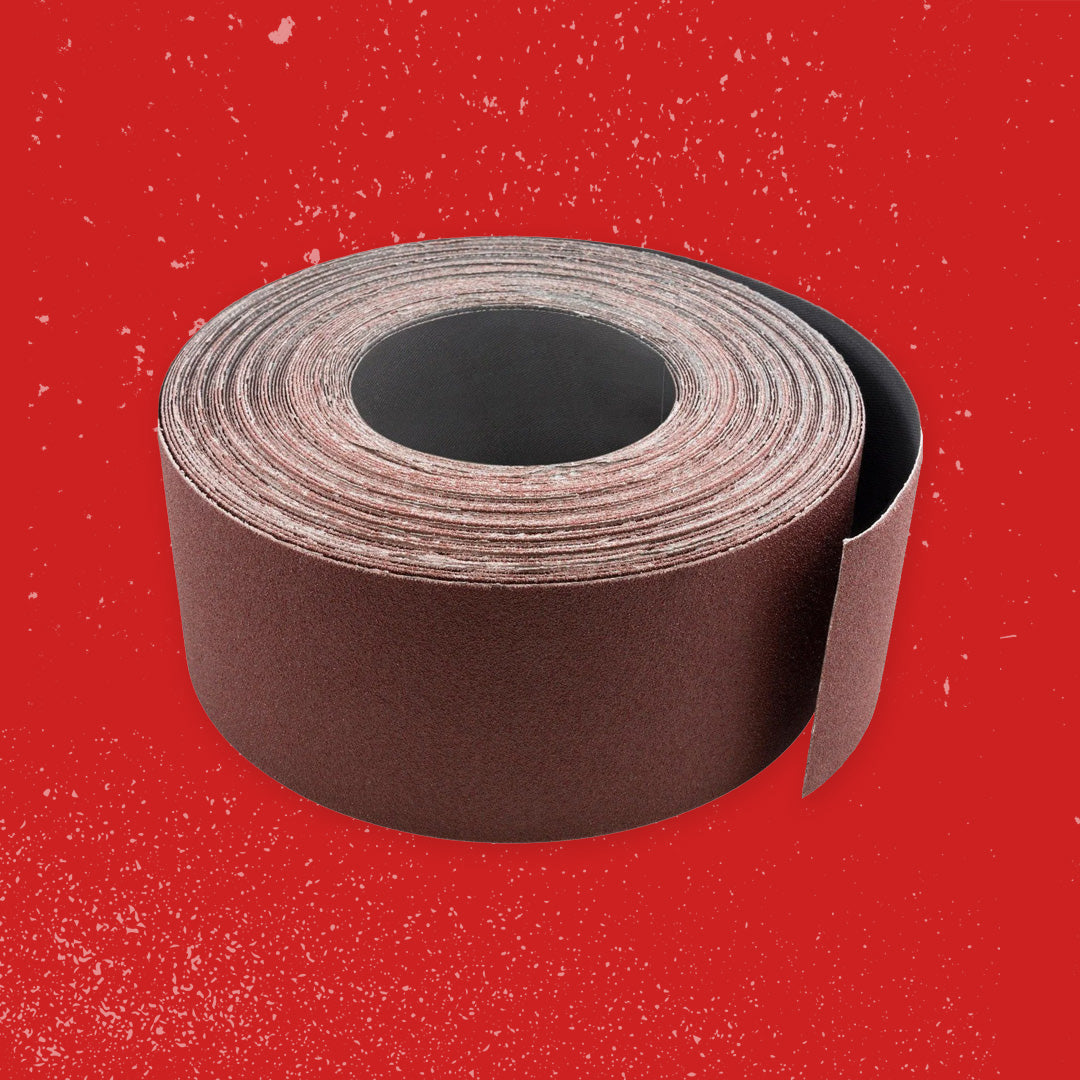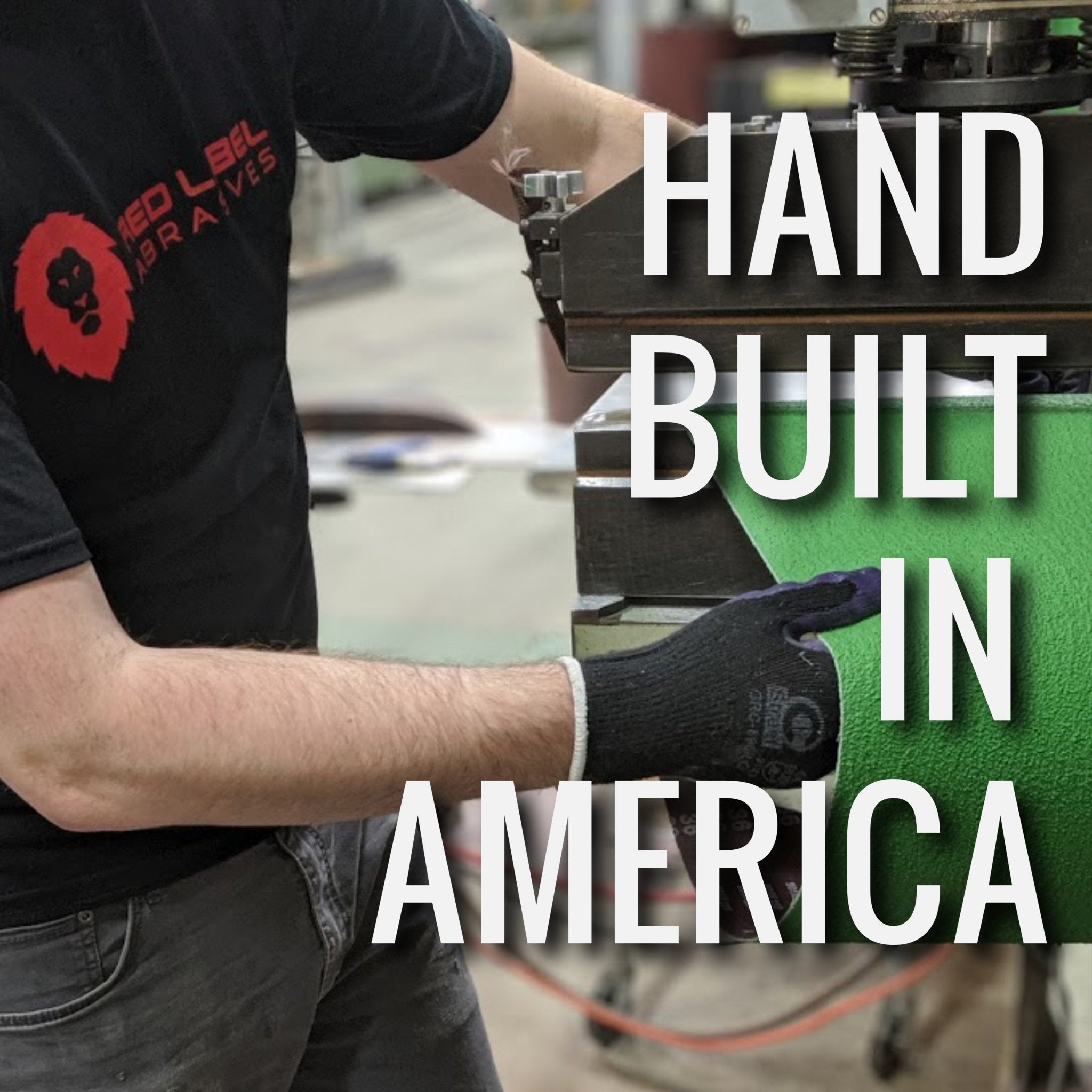Your Cart is Empty
Free Shipping over $150 (Excludes Oversized Products)
Free Shipping over $150 (Excludes Oversized Products)
Sanding Belts
Sanding Discs

How To Identify Real Vs. Fake Damascus Steel
by David Kranker 7 min read

Quick Summary
For millennia, damascus steel has captivated with its razor-sharp edges, enduring strength, and beautiful aesthetics. As demand surged over time, so did imitation and forgery, making it hard to identify real vs. fake damascus steel. Factors like pattern quality, layer formation, and blade texture and grain all play a critical role in confirming that your investment is in authentic damascus steel.
Damascus steel has been renowned for its sharpness, resilience, and mesmerizing appearance for thousands of years. These blades bear distinct patterns, akin to flowing water or swirling smoke, which are as much a testament to the skill of the craftsmen as they are to the unique structure of the steel.
However, as the demand for this material has grown, so too has the prevalence of imitation and forgery. The main difference between real and fake damascus steel is the overall formation and quality of the pattern, but not everyone knows what to look for. In this blog, the team at Red Label Abrasives reveals how to tell authentic blades apart from their manufactured counterparts, so that you can be sure the steel you’re investing in is the real deal.
Understanding Damascus Steel
Damascus steel is a type of steel known for its distinctive wavy or flowing patterns on the surface, as well as its exceptional sharpness and resilience. Often associated with the Middle East and South Asia, it has a rich historical and cultural heritage.
Traditional damascus steel, often referred to as "wootz" steel, is believed to have originated in India and was later introduced to Damascus, Syria, which is where it gained its name. The manufacturing process involves a complex forging technique that layers and folds different types of iron and steel, resulting in a blade with a unique pattern. This pattern emerges due to the interaction of the different metals during forging and can be further revealed through acid etching.
Historically, genuine damascus steel was renowned for its quality, strength, and the aesthetic appeal of its patterns. It was highly prized for weapon-making, particularly for swords and knives, due to its sharpness, edge retention, and ability to withstand impact. Today, damascus steel is highly sought after for its beauty, historical significance, and the unique characteristics it imparts to blades and other items.
How is Damascus Steel Made?
In ancient times, this unique steel was created by smelting Wootz steel and iron with wooden chips. This combination was heated, compressed, cooled in controlled conditions, and repeatedly forged. As a result of this process, blades acquired a carbon content of approximately 1% and developed subtle, flowing wavy patterns. Acid etching was used to enhance the damascus folds and make them more visible.
Contemporary damascus steel knives are usually made through pattern welding. This intricate process, which is outlined below, imparts the steel's exceptional properties and its signature water-like patterns.
- Layering and Folding: The process begins by layering alternating sheets of high-carbon and low-carbon steels. This layering enhances the blade's strength and flexibility, which is a hallmark of true damascus steel. The layered stack is then heated, hammered, and folded repeatedly to eliminate impurities, distribute carbon evenly, and create a unified structure.
- Forging and Welding: As the layers are hammered and folded, the metals fuse together, forming a solid billet. The careful control of temperature and pressure during the forging process is vital to achieving the desired properties. Skilled craftspeople carefully weld the layers together, creating a homogenous material with a distinct grain structure.
- Pattern Development: The true magic of damascus steel lies in its pattern. The distinctive water-like or wavy patterns emerge from the interaction of the layered metals during forging. Etching with acid can further reveal these patterns by darkening the high-carbon layers.
The interplay of high-carbon and low-carbon layers contributes to these exceptional characteristics:
- Resilience and Flexibility:The layering technique not only enhances the steel's durability but also imparts flexibility. This is crucial for blades as it prevents them from becoming brittle and prone to shattering under stress.
- Edge Retention and Sharpness:The high-carbon layers are responsible for the blade's edge retention and sharpness. The hardness of these layers allows for a keen edge that can be maintained through extended use.
Although most bladesmiths still use age-old techniques, others use modern materials and technologies to mimic the aesthetics and properties of damascus steel. Depending on the skill of the maker, some imitations look like the real thing, making it challenging (but not impossible) to confirm what you’re getting.
What Are The Key Indicators of Authentic Damascus Steel?
The key to identifying true damascus steel is to know what sets it apart from imitations. Below is an overview of the differences you should be looking for.
Rippling Pattern
Genuine patterns exhibit a natural and organic appearance, often resembling rippling water or swirling smoke. The layering and forging process creates these patterns, which can't be easily replicated. Authentic patterns also have a fluid and coherent flow that seems to move across the surface. The lines and curves merge seamlessly, giving a sense of unity to the overall design. Imitations may appear rigid or overly uniform, lacking the dynamic movement of true damascus steel.
Seamless Layers
Traditional damascus steel is crafted through the folding and forging of layers, resulting in a solid, cohesive billet. If you spot visible weld lines or seams on the blade's surface, it could indicate a lack of authenticity. Authentic damascus steel exhibits a seamless integration of its layers.
Texture and Grain
Genuine damascus steel possesses a tactile quality that is often missing in imitations. This texture, which is usually lacking in imitations, enhances grip and adds to the authenticity of the piece. Authentic blades also exhibit a consistent and flowing grain pattern that can be seen when the blade is etched with acid.
To run this test, use a piece of sandpaper to gently abrade a small area of the steel, effectively removing the damascus pattern. Then submerge the sanded steel segment into a ferric chloride solution. Thirty seconds to one minute in the solution is adequate for the pattern to surface if the steel is authentic. After taking it out, clean the area with water or sprinkle a touch of baking soda on it to neutralize the etchant. Then rinse the blade.
Should the knife indeed be constructed from genuine damascus steel, the pattern will reemerge on the abraded section of the metal. Conversely, if the etched portion fails to regain the pattern but instead showcases a uniformly dark hue, it is indicative of the steel being counterfeit damascus.
To accurately assess the results of the acid etching test, compare them to known authentic damascus steel samples. This visual comparison can help you discern if the pattern is genuine or artificially created.
Common Characteristics of Fake Damascus Steel
While some forgeries may be convincing at first glance, a closer examination often reveals distinct characteristics that set them apart from the real deal. Let's take a closer look at the common indicators that can help you unmask fake damascus steel.
Acid Etching Overcompensation
Acid etching is one of the most prevalent techniques used by forgers to create patterns on blades. This involves applying acid to create darker lines that mimic the appearance of layered damascus steel.
While genuine damascus steel patterns flow organically, fake blades created through acid etching often display a high degree of uniformity and regularity. The patterns may look too perfect and lack the subtle variations seen in authentic patterns.
Machine-Generated Patterns
Machine-generated patterns can replicate the appearance of damascus steel. These patterns are often produced using laser or waterjet cutting techniques, which create consistent and repeatable designs.
While machine-generated patterns may superficially resemble damascus steel, they usually lack the depth and complexity characteristic of genuine blades. Authentic patterns emerge from the interplay of different metals and the forging process, resulting in a dynamic and multidimensional design.
Inconsistent Patterns
True damascus steel has a flowing, harmonious pattern that traverses the blade. On the other hand, fake blades may showcase irregularities, abrupt changes, or unnatural distortions in their patterns, revealing the handiwork of imitators.
It is important to note that the pattern should be visible on all parts of the knife, not just the blade. If it isn’t, then the steel may not be authentic damascus.
Comparison at a Glance
Real Damascus Steel
|
Fake Damascus Steel
|
Forge Your Own Damascus Knives With Red Label Abrasives
The ability to distinguish between genuine damascus steel and its facsimiles has become an essential skill for collectors, enthusiasts, and those who seek blades of unparalleled quality or artistic masterpieces. Fortunately, factors like pattern fluidity, layer integration, tactile texture, and acid etching test results can help ensure that you get the real thing instead of a beautiful forgery.
At Red Label Abrasives, we serve hobbyists and professional knife makers by providing premium quality abrasives. Our knife making kits support all stages of the blade formation process, from shaping to finishing and polishing, equipping you with the resources you need to pursue your passion for authentic damascus steel.
Our Knife Making Kits
Our team of abrasive technicians is here to serve you. If you have questions or would like to place an order, call 844-824-1956 or fill out our contact form today!
ABOUT THE AUTHOR
David Kranker is a writer and creative maker who has been covering the abrasive and knife-making industries on the Red Label Abrasives Blog since 2020. David spends his time continually researching sanding and bladesmithing to provide readers with the latest and greatest information. In his free time, David utilizes abrasives for many different home and auto projects at his home in Delton, MI.
Belt Packs Made For Knife Makers

2 X 72 Inch Knife Makers Sanding Belts Assortment

2 X 60 Inch Knife Makers Sanding Belts Assortment

2 X 48 Inch Knife Makers Sanding Belts Assortment

2 X 36 Inch Knife Makers Sanding Belt Assortment

2 X 42 Inch Knife Makers Sanding Belts Assortment

1 X 30 Inch Knife Makers Sanding Belts Assortment

1 x 42 Inch Knife Makers Sanding Belt Assortment
Shop By Product Category





Why Choose Red Label?













